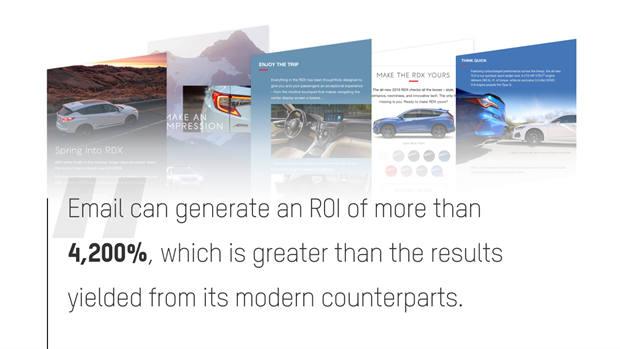Despite the presence of more sophisticated mediums, email marketing is still the most dependable tool among marketers to date. According to Oberlo, at least 81% of small and medium-sized enterprises (SMEs) consider email as their top customer acquisition and retention channel because of its high return on investment (ROI). In fact, email can generate an ROI of more than 4,200%, which is greater than the results yielded from its modern counterparts.
But aside from being an effective standalone medium, email is also seen as an invaluable supplemental tool to social media efforts. It’s true that social media is a potent tool in generating organic engagement. However, unlike email, it’s not as powerful in generating click-throughs and direct conversions. Because of this, businesses are merging these two marketing channels to build a stronger brand presence and generate greater ROI for their campaigns.

Recognizing Email and Social’s Strengths
Both social media and email have different strengths. The main advantage of social media is that it enables marketers to reach a larger consumer base. Through social media, businesses can build an extensive network of followers, as opposed to email, which is restricted to a definitive list of contacts. That’s why social media is deemed the most ideal platform for building brand awareness—an important first step to the path of conversion. Indeed, social media is still the easiest approach in establishing digital presence, attracting leads, and growing a substantial following, compared to other marketing channels.
Meanwhile, the strength of email lies in its high level of personalization. The truth is, personalization is much harder on social media, especially through organic methods. Email, on the other hand, makes it more convenient for marketers to segment their audiences and launch more targeted campaigns. They don’t need to depend on paid efforts to deliver personalized content to their intended audience. Marketers can just configure and automate their campaigns through contact management and segmentation.
Furthermore, compared to social media, marketers are able to generate higher levels of engagement when using email. Email yields an impressive average click-through rate of 2.5%, which is much higher than social media (0.07%). This suggests that while email is not the best channel to grow leads due to limited reach, it’s still the most effective tool in strengthening customer relationships with existing contacts. Aside from improving customer relationships, email generates 40% more conversions than social media as well.
This explains why 54% of marketers build most of their customer retention strategies around email marketing. So, businesses looking to improve their retention rates can depend on email to do the job. In fact, according to HubSpot, merging social media and email can help marketers achieve a “holistic approach to digital marketing.” Businesses are most likely to see higher returns from merging these two different tactics that cover opposing ends of the marketing spectrum.
Banding The Two Together
Apart from embedding social buttons into email campaigns, what are some strategies to integrate social media? One way is through retargeting efforts. For instance, businesses can re-engage inactive subscribers or recover lost sales by launching retargeting ads on Facebook, Instagram, Twitter, TikTok, or LinkedIn.
Retargeting ads are focused on users who bounced off after opening an email or clicking a link. Through social media retargeting ads, these users are encouraged to complete specific transactions or perform desired actions—whether that’s filling up a form, downloading a file, or completing an order, In fact, according to Google, blending social media with other marketing channels for retargeting purposes can boost sales up to 50%. So those potential leads aren’t lost for good as they can always be redirected back to your campaigns with the help of social media retargeting ads.
Apart from paid ads, there’s also an organic method to re-engage subscribers on social media. Some businesses import their email contact lists to social media platforms, ensuring they remain connected with their subscribers outside the inbox. On Facebook, this feature is called Custom Audiences, while on Twitter it’s called Tailored Audiences. Subscriber lists can also be connected to LinkedIn through the Matched Audiences tab. Brands commonly use this feature to follow their subscribers’ social media accounts but this imported contact list can also be used for narrowing down audiences of paid advertisements.
Emails, on the other hand, can be used to increase social media influence, specifically by embedding social live feeds into email campaigns. This technique makes email campaigns more dynamic and interactive to subscribers. Furthermore, introducing live feeds can help boost social media followers and increase social engagements.
National Geographic, for example, tried incorporating live tweets into their past email campaigns to encourage subscribers to join in their advocacy-driven conversations on Twitter. This cross-channel promotion helped the brand spark conversations about socially relevant issues like hunger and poverty. Some brands also use live feeds to encourage their subscribers to post content or follow their campaigns in real-time. Aside from live feeds, businesses encourage their subscribers to follow their social media platforms or visit their social campaigns by offering incentives. Providing incentives has been proven to increase conversions and overall engagement of campaigns. Meanwhile, some encourage email opt-ins by launching social media contests and promoting them on email. This is a cost-effective method to share the news, grow contact lists, and expand reach through organic efforts on social media.



